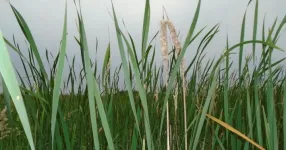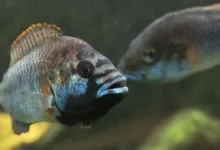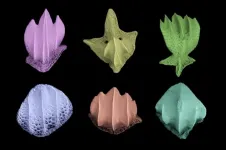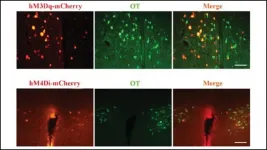(Press-News.org) LAWRENCE -- A new paper from a lead author based at the University of Kansas finds wetlands constructed along waterways are the most cost-effective way to reduce nitrate and sediment loads in large streams and rivers. Rather than focusing on individual farms, the research suggests conservation efforts using wetlands should be implemented at the watershed scale.
The paper, just published in the Proceedings of the National Academy of Sciences, relied on computer modeling to examine the Le Sueur River Basin in southern Minnesota, a watershed subject to runoff from intense agricultural production of corn and soybeans -- crops characteristic of the entire Upper Midwest region.
"Excessive nitrate or sediment affect local fish populations, the amount of money we have to spend to treat drinking water, and there's a downstream effect also," said lead author Amy Hansen, assistant professor of civil, environmental & architectural engineering at KU. "Our rivers integrate what's happening across the landscape, so that location that you love to go and fish or swim -- whether that continues to be a great place to fish or swim has a lot to do with the choices that people are making further upstream. Excess pollution goes to a water body downstream like a reservoir or the ocean and causes algal blooms or hypoxic or 'dead zones.' The dead zone in the northern Gulf of Mexico is directly correlated with nitrate that comes from the Mississippi River Basin."
The research team compared potential watershed approaches to improving water quality, such as cutting runoff from farms and adding wetlands, then gauged the economic costs of each. Because most methods rely on voluntary participation by individual farms and are implemented by a patchwork of different agencies, the researchers found they're less effective.
"Currently, there's individual management or conservation practices, and those include cover crop, high-precision fertilizer application, reduced tillage, constructed wetlands and ravine tip management. Those are some of the different practices we considered," Hansen said. "But management of non-point sources is voluntary in the U.S. through incentive programs, and the scale these conservation practices are often considered at is the individual farmer when a coordinated approach is much more effective. In a way, it's like a recycling program where you're saying, 'Anyone recycling one thing is better than no one recycling.' This is true, some recycling is better than no recycling, but a coordinated approach will save money and be more effective."
Hansen and her co-authors found constructed wetlands are the most effective of these practices, especially if the size and location are evaluated at the scale of a watershed -- an entire region that drains into a common waterway. The KU researcher said wetlands do two things well: They slow down water as it heads toward streams and rivers and contain vegetation and microbes that can process nutrients used as fertilizer on crops.
"Microbes and plants within wetlands are actually removing the nitrate from the water," Hansen said. "With sediment, on the other hand, what the fluvial wetlands are doing is holding water back during these high flows -- and by holding that water back you're getting lower peak stream flows, which is reducing the amount of near channel sediment that's being transported downstream."
While Hansen's research expertise is in water quality, her co-authors from the University of Minnesota, the University of California-Irvine and other institutions across the United States brought multidisciplinary perspectives to the challenge of improving agricultural water quality. The collaboration was supported by an award from the National Science Foundation.
"This work would not have been possible without the diverse expertise and perspective of the team composed of hydrologists, ecologists, geomorphologists, biogeochemists, social scientists and environmental economists," said Efi Foufoula, the lead principal investigator on the project from the University of California-Irvine. "The sustained NSF support allowed us to take a fresh view of the problem and take the time needed to collect extensive field data, build new models and engage with stakeholders. We hope that our results will affect policy and management as the clock ticks to meet the water quality targets of the state."
Indeed, a key aspect of the new study focuses on the economics of implementing small, shallow fluvial wetlands and stabilizing ravines. According to the investigators, such measures "were clearly more cost-effective than field management." But the researchers found the performance of wetlands required optimal placement, and often cost-effective wetlands can be too expensive for a single farm or one agency to put in place.
The PNAS paper concludes a comprehensive strategy must address an entire watershed as a system, combining funds from different programs and agencies and pinpointing locations for fluvial wetlands that will lead to the greatest reduction in nitrates and sediments reaching waterways.
"This work shows that we can't make real progress toward our goals for improving water quality in agricultural areas with more of a business-as-usual approach," said study co-author Jacques Finlay, a professor in the College of Biological Sciences at the University of Minnesota. "Instead, conservation actions, and the investments that support them, can be more effective if they consider the interactions that underlie the source of water pollution and how different management options influence them."
The researchers used the Le Sueur River Basin as a proof-of-concept watershed but say their findings could be applied to agricultural regions throughout the Midwest.
INFORMATION:
In the movie "A Fish Called Wanda", the villain Otto effortlessly gobbles up all the occupants of Ken`s fish tank. Reality, however, is more daunting. At least one unfortunate fan who re-enacted this scene was hospitalized with a fish stuck in the throat. At the same time this also was a painful lesson in ichthyology (the scientific study of fishes), namely that the defense of some fishes consists of needle-sharp fin spines.
Two types of fin elements
Indeed, many fish species possess two types of fin elements, "ordinary" soft fin rays, which are blunt and flexible and primarily serve locomotion, and fin spines, which are sharp and heavily ossified. As fin spines serve the ...
For 400 million years, shark-like fishes have prowled the oceans as predators, but now humans kill 100 million sharks per year, radically disrupting ocean food chains. Based on microscopic shark scales found on fossil- and modern coral reefs in Caribbean Panama, Smithsonian scientists reveal the changing roles of sharks during the last 7000 years, both before and after sharks in this region were hunted. They hope this new use for dermal denticles will provide context for innovative reef conservation strategies.
Microscopic scales covering a shark's body--dermal ...
A study published the week of July 5 in the Proceedings of the National Academy of Sciences led by Michael Moore at Washington University in St. Louis finds that dragonfly males have consistently evolved less breeding coloration in regions with hotter climates.
"Our study shows that the wing pigmentation of dragonfly males evolves so consistently in response to the climate that it's among the most predictable evolutionary responses ever observed for a mating-related trait," said Moore, who is a postdoctoral fellow with the Living Earth Collaborative at Washington University.
"This work reveals that mating-related traits can be just as important to how organisms ...
Scientists recently made news by using fossil shark scales to reconstruct shark communities from millions of years ago. At the same time, an international team of researchers led by UC Santa Barbara ecologist Erin Dillon applied the technique to the more recent past.
Human activities have caused shark populations to plummet worldwide since records began in the mid-20th century. However, the scientists were concerned that these baseline data may, themselves, reflect shark communities that had already experienced significant declines. Dillon compared the abundance and variety of shark scales from a Panamanian coral reef 7,000 years ago to those in reef sediments ...
A vast seabird colony on Ascension Island creates a "halo" in which fewer fish live, new research shows.
Ascension, a UK Overseas Territory, is home to tens of thousands of seabirds - of various species - whose prey incudes flying fish.
The new study, by the University of Exeter and the Ascension Island Government, finds reduced flying fish numbers up to 150km (more than 90 miles) from the island - which could only be explained by the foraging of seabirds.
The findings - which provide rare evidence for a long-standing theory first proposed at Ascension - show how food-limited seabird populations naturally are, and why they are often so sensitive to competition with human fishers. ...
Nanomaterials found in consumer and health-care products can pass from the bloodstream to the brain side of a blood-brain barrier model with varying ease depending on their shape - creating potential neurological impacts that could be both positive and negative, a new study reveals.
Scientists found that metal-based nanomaterials such as silver and zinc oxide can cross an in vitro model of the 'blood brain barrier' (BBB) as both particles and dissolved ions - adversely affecting the health of astrocyte cells, which control neurological responses.
But the researchers also believe that their discovery will help to design safer nanomaterials and could open ...
Like female voles, connections between oxytocin neurons in the hypothalamus and dopamine neurons in reward areas drive parental behaviors in male voles, according to new research published in JNeurosci.
Motherhood receives most of the attention in the research world, yet in 5% of mammals -- including humans -- fathers provide care, too. The "love hormone" oxytocin plays a role in paternal care, but the exact neural pathways underlying the behavior were not known.
He et al. measured the neural activity of vole fathers while they interacted with their offspring. Oxytocin neurons connecting the hypothalamus to a reward area fired when the fathers cared for their offspring. ...
The psychedelic drug psilocybin, a naturally occurring compound found in some mushrooms, has been studied as a potential treatment for depression for years. But exactly how it works in the brain and how long beneficial results might last is still unclear.
In a new study, Yale researchers show that a single dose of psilocybin given to mice prompted an immediate and long-lasting increase in connections between neurons. The findings are published July 5 in the journal Neuron.
"We not only saw a 10% increase in the number of neuronal connections, but also they were on average about 10% larger, so the connections were stronger as well," said Yale's Alex Kwan, associate professor of psychiatry and of neuroscience and senior author of the paper.
Previous ...
A new collaborative research led by researchers from the National Institute for Environmental Studies, Potsdam Institute for Climate Impact Research, Ritsumeikan University, and Kyoto University found that although unlimited irrigation could increase global BECCS potential (via the increase of bioenergy production) by 60-71% by the end of this century, sustainably constrained irrigation would increase it by only 5-6%. The study has been published in Nature Sustainability on July 5.
Bioenergy with carbon capture and storage (BECCS) is a process of extracting bioenergy from biomass, ...
"The number of black holes is roughly three times larger than expected from the number of stars in the cluster, and it means that more than 20% of the total cluster mass is made up of black holes. They each have a mass of about 20 times the mass of the Sun, and they formed in supernova explosions at the end of the lives of massive stars, when the cluster was still very young" says Prof Mark Gieles, from the Institute of Cosmos Sciences of the University of Barcelona (ICCUB) and lead author of the paper.
Tidal streams are streams of stars that were ejected from disrupting ...




